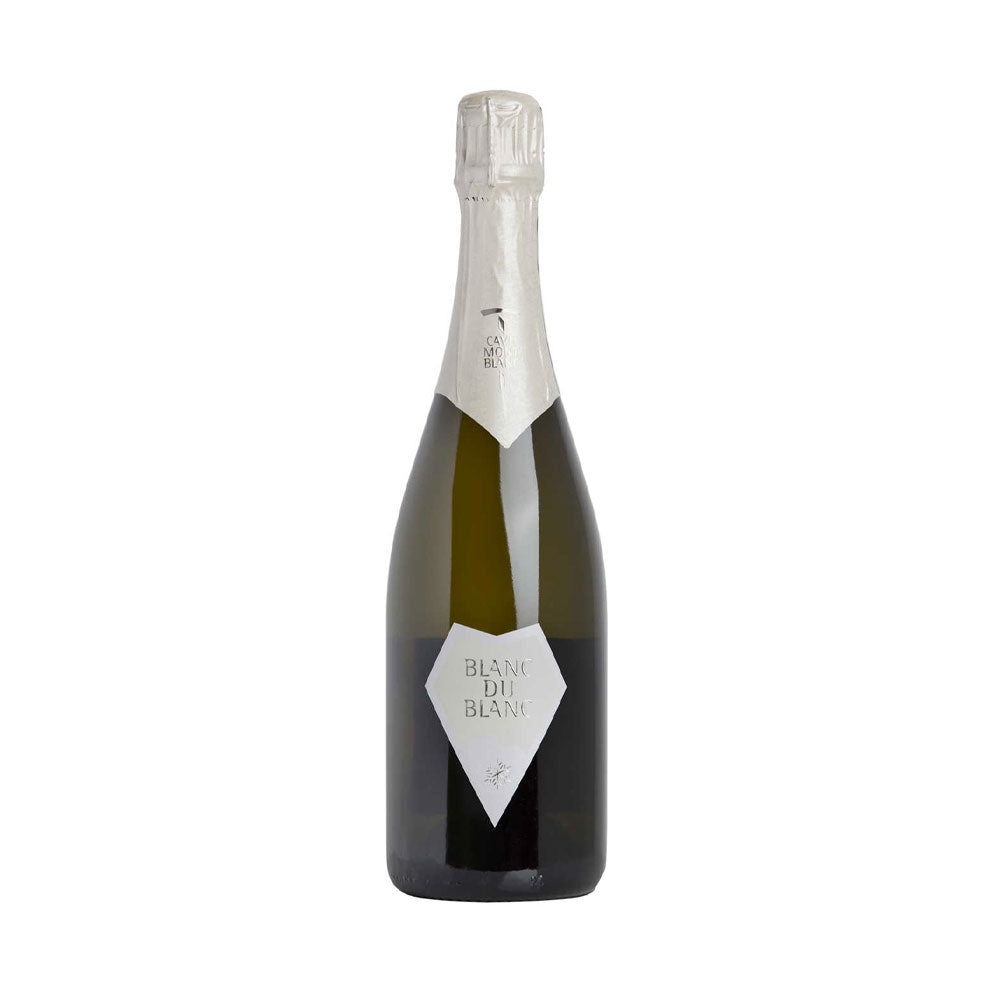
Blanc Du Blanc BRUT | Cave Mont Blanc
DENOMINATION: Vallée d’Aoste DOC Blanc de Morgex et de La Salle
TYPE: sparkling
GRAPES: Prié Blanc 100%
PROVENANCE: Italy, Trentino Alto Adige
AGEING POTENTIAL: 3 years
SERVING TEMPERATURE: 6-8° C
GLASS: medium-size wine glass
ALCOHOL: 11,5% ABV
FORMAT: 75 cl
THE WINE
TECHNICAL SPECIFICS
FRESHNESS: ◼︎◼︎◼︎◼︎◻︎
BODY: ◼︎◼︎◼︎◻︎◻︎
SAPIDITY: ◼︎◼︎◼︎◻︎◻︎
SOFTNESS: ◼︎◼︎◼︎◻︎◻︎
NOTES FROM OUR SOMMELIERS
👁 of a beautiful lively straw yellow with greenish reflections; fine and persistent bubbles;
👃🏻 a fine and intense fruity bouquet emerges on the nose, dominated by notes of wisteria and lilac, with fruits such as bitter almonds; the bread crust closes a very pleasant olfactory profile;👄 on the palate it's fresh, expresseing an excellent balance between hardness and softness; it's persistent and elegant. A wine
of great charm, produced in altitude.
FOOD PAIRINGS
A fresh sparkling wine, perfect as an aperitif, which goes perfectly with savory cured meats such as lardo di Colonnata, which together with this Brut leaves the mouth perfectly clean and ready for another sip. For a vegetarian solution, accompany a vegetable flan with fondue.
WINE-MAKING AND REFINEMENT
Champenoise Method. The base wine carries out the first fermentation in large wood (larch and oak) and in stainless steel. Traditional refermentation in the bottle, with dégorgement no earlier than 18 months.
YOU'LL LOVE IT FOR...
its freshness.
ORIGIN
TERROIR
We are in the Aosta Valley. The DOC is identified with the flat valley floor where the Dora Baltea flows, where the vineyards have one side facing south and one facing north. The scarcity of surfaces suitable for agriculture has prompted the populations of the Alpine arc to move towards the sunny slopes of the mountains, building impressive terraces, for a tiring and high quality viticulture.
The Denomination of Origin Valle d'Aosta DOC was recognized in 1971 and has undergone changes, introducing new varieties, most of which are indigenous. Of the vines suitable for the production of Valle d'Aosta DOC, 7 are native (Mayolet, Fumin, Cornalin, Petit rouge, Premetta, Vuillermin and Prié blanc), 2 are traditional (Petite Arvine, Nebbiolo), while Moscato bianco is historically cultivated in the Chambave area. In the area the vineyards are cultivated with traditional forms of farming and pruning systems of maximum efficiency. Pergolas are still widespread, which allow heat to be retained from the ground and protect against winter snowfalls.
The red wines of Valle d'Aosta DOC have fruity aromas typical of the vines, which in the aging versions are expressed on spicy and balsamic notes. The white wines of Valle d'Aosta DOC express themselves on fruity sensations with important mineral notes, characteristics of loose and light soils. The strong temperature range determines aromas characterized by intense fruity and floral notes. Finally, in the passito and late harvest versions, jams and dried fruit emerge for complex, elegant and balanced aromas.
WINERY
At the foot of Mont Blanc, Cave Mont Blanc winery cultivates vines in the highest terrains in Europe. The dedication of the cellar enhances the territory while remaining faithful to the territory, for wines capable of telling the terroir in a direct and pure way. This is an alpine reality, made of rock, pure water and frost in winter; a mountain land where in the hot season, sweet and fruity scents invade the air. Their wines tell the tenacity of those who have decided to cultivate the vineyards at the foot of Mont Blanc.
In the past, Blanc de Morgex et de La Salle was marketed by single cellars, with modest productions which did not guarantee a constant presence on the market or a correct diffusion. The sense of pride in one's own traditions gave rise to the creation of the "Association des Viticulteurs", evolved in 1983 into the Cave Mont Blanc de Morgex et La Salle.
Today La Cave brings together about 80 producers for a small vineyard area of just 18 hectares: winemakers united to give new life to previously abandoned vineyards, in the desire not to let the centuries-old tradition of those places die. Their vines grow between 900 and 1,200 meters above sea level on terraces on the slopes of the mountains: these are heroic vineyards, cultivated in pursuit of the highest quality, continued in the cellar.

When will I receive my order?
If the bottle is in stock it will be sent immediately and you will receive it in a couple of working days.
Is the order renewed?
No, this product is not bound by any type of subscription and cannot be renewed.
Is there a minimum number of bottles?
No, you do not have to order a minimum quantity of bottles: you can choose to receive just one bottle of each type.

This product has no reviews yet.
